Top Tier CPU Air Coolers Q3 2015: 9-Way Roundup Review
by E. Fylladitakis on July 6, 2015 8:00 AM ESTThe Logisys (DeepCool) Gamer Storm Assassin
Founded back in 1996, Deepcool (Logisys in the North American markets) is one of the oldest CPU cooler manufacturers. They are not a very well known brand name because they primarily focused on server and OEM coolers, not retail products. However, their recently launched "Gamer Storm" range comes to change that, with direct focus on retail products for advanced users. Deepcool provided us with their "Assassin" cooler for this review, the highest performance CPU cooler they currently market.
Deepcool supplies the Assassin in a very tall, large cardboard box with a relatively simple, dark artwork theme. Everything is exceptionally well packed inside the box, with everything protected inside secondary boxes and layers of polyethylene foam. The bundle consists of the hardware necessary for the mounting of the cooler, a fan power cable splitter and a Molex power adaptor, a tube of quality thermal grease, a metallic case badge and six wire clips for up to three cooling fans.
The Deepcool Gamer Storm Assassin is a very large and heavy dual tower cooler. It weighs more than 1.5 kg with both fans installed, making it one of the heaviest CPU coolers in existence. Each tower consists of fins forming a jagged saw tooth formation on one side and a complex geometric pattern formed of tetrahedrals and squares on the other side. Strangely, the towers are physically identical, yet they are reversed, meaning that one fan will be facing the jagged side of the fins and the other the complex tetrahedral-square pattern. This makes us unsure whether that strange pattern is for aesthetic purposes only or if it actually improves performance in any way. There are no openings for a screwdriver, therefore the center fan needs to be uninstalled during the installation/removal of the cooler. Furthermore, a Philips PH2 or a slotted 3.2 mm - 4 mm screwdriver with a shank longer than 150 mm is necessary. There is no tool provided in the box, therefore do make sure that you have an adequately long screwdriver available.
Deepcool provides two cooling fans alongside the Assassin, one 140 mm and one 120 mm fan. The 140 mm fan is to go in between the two towers, while the 120 mm fan on either side of the cooler. The company is obviously not using two 140 mm fans in order to provide some clearance to the RAM slots, which would be completely blocked if a 140 mm fan were to be mounted at the front side of the cooler.
The fans come from Deepcool's own UF range, have dual ball bearings and anti-vibration frame covers. A strange fact is that the 140 mm fan is faster than the 120 mm fan, with a maximum speed of 1400 RPM and 1200 RPM respectively. Deepcool is the only company that follows this approach, as the rest of the manufacturers with asymmetric fan setups seem to prefer the opposite, in order for both fans to have about equal airflow.
The base of the Assassin is very long, with eight 6 mm heatpipes running through it. This is another strange approach as there is no CPU long enough to make full contact with a base this long. It does not mean that the heatpipes near the edges of the base will be useless but it is unlikely that they will function at maximum efficiency. Both the copper base and the heatpipes of the Assassin are nickel plated, with the contact surface polished down to a perfect mirror finish.


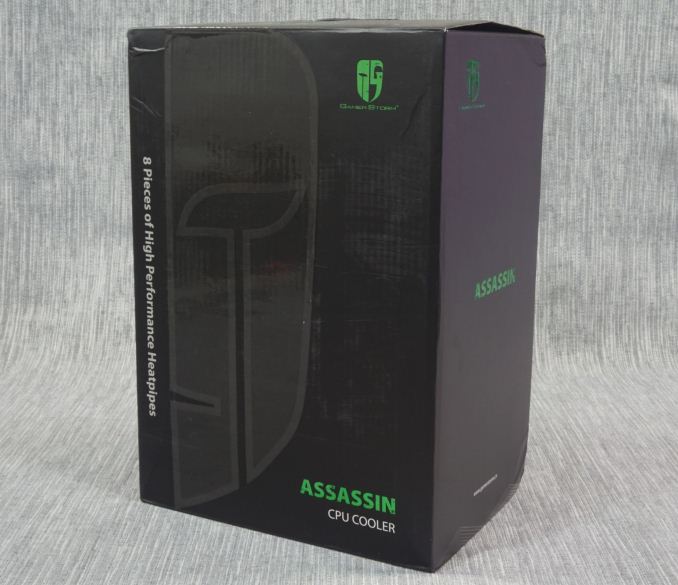
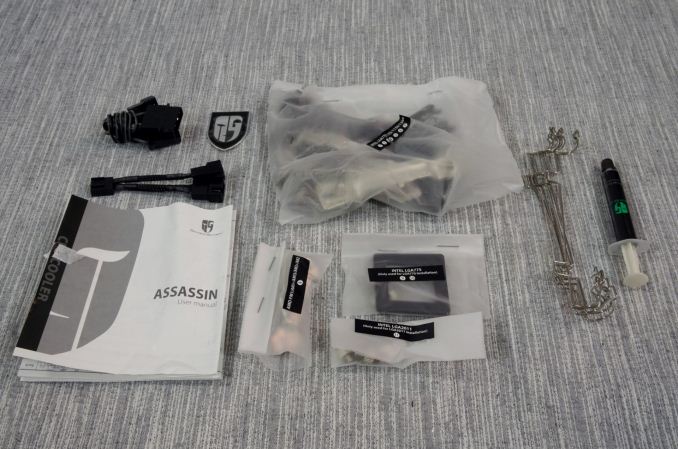
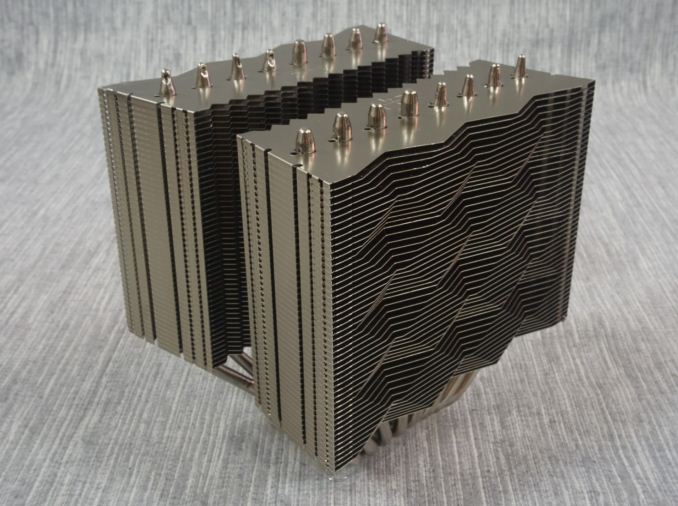
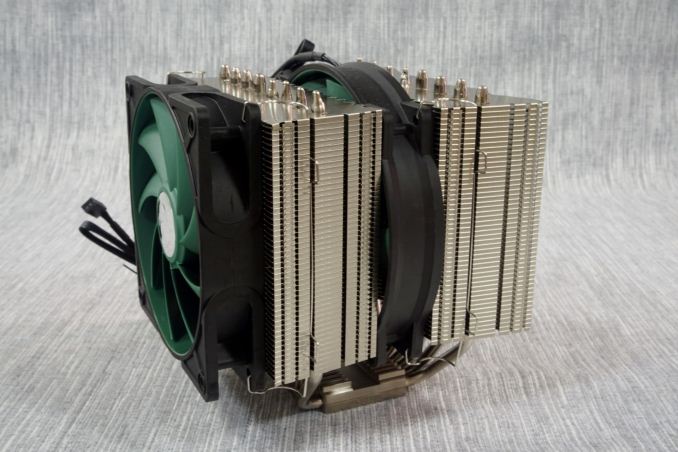
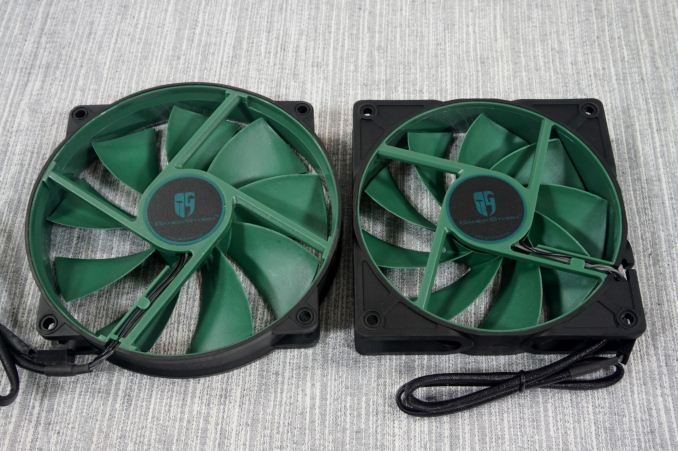









135 Comments
View All Comments
TheJian - Tuesday, July 7, 2015 - link
http://www.anandtech.com/show/6830/cpu-air-cooler-...It is far more impressive than you give it credit for. I easily hit >5ghz on this fan with i4790K.
Shadow7037932 - Tuesday, July 7, 2015 - link
If you're going to extreme OCing, why the hell aren't you on custom water cooling or Dice/LN2?Nfarce - Wednesday, July 8, 2015 - link
Because where I am in overclock, the best air keeps up with the best closed loop kit cooling for far less money.tabascosauz - Monday, July 6, 2015 - link
What farce said is true. At high voltages and overclocks, the 212 EVO breaks down and the dual towers begin to shine.DanNeely - Monday, July 6, 2015 - link
Which with simulated thermal loads ranging from 60-340W should have been made apparent in the course of testing.I would hope and expect that most if not all of these coolers would out perform it, especially at higher loads. But as a de-facto standard budget cooler for people who want something better than Intel's I think it should've been added to the matrix to show how much better these bigger ones performed. A stock Intel cooler should've been included as well for the same purposes (at least at the lower loads; no sense risking burning the test setup by trying to broil 340W through it). Including a mainstream reference point is especially important in this case because E. Fylladitakis's synthetic test load means that we can't cross reference his results with those found elsewhere.
SUpstone - Thursday, October 29, 2015 - link
Totally agree - to get the full picture and to aid comparability with other tests the reference points of the Intel stock cooler (free) and CM 212 EVO (£25) should be included.Flunk - Monday, July 6, 2015 - link
If you buy one of those things on sale I've seen them as low as $30, which if you don't need better cooling, is a good deal. The reason the Hyper 212 EVO is popular is that it's cheaper than most of it's competition and easily available. They're good enough for moderate overclocking on a 1150-series chip so they do fit the bill for a lot of people. Something being popular doesn't make it bad.Pastuch - Monday, July 6, 2015 - link
I have 2 of the original Hyper 212 (Non-evo) on two different I5-2500Ks that have been running super quiet at 4.4ghz for the last 4+ years. No coil whine or bearing degradation on the fans. I paid $20 for each Hyper 212 Evo. The value for the money is amazing. It's an excellent quality reliable product and it's easy to install.I paid $220 for my I5-2500k, 20$ for the Hyper 212 Evo, and $70 for 8gbs of PC 1333 in February of 2011. At 4.4ghz, it's still within 5% as fast as any CPU on the market. Sandy Bridge FOREVER! I'll keep buying video cards. You can waste your money on HSF upgrades for CPUs that become less important every day. DX12 is just going to make the CPU even less useful.
Pastuch - Monday, July 6, 2015 - link
Just to clarify, those are Canadian prices which makes them even more amazing. The new I5-K in Canada is almost $300! No thanks.northward - Monday, July 6, 2015 - link
Remember, the average exchange in 2011 was 1.011 (CAD to USD). It is presently 0.79 (CAD to USD). Assuming US/CAN price parity in 2011, that $220 cooler would cost ~$278, not that far behind the $284 i5 4690K.